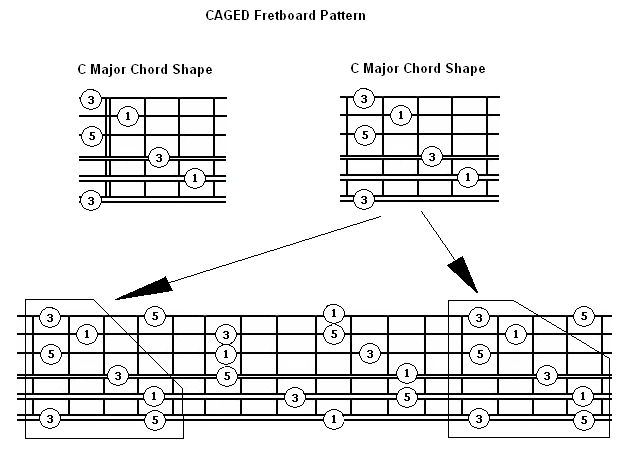Trying to learn different chord voicings and I struggle with a few things.
Looking at a fret board chart there are so many voicings and possible ways to play a chord. I likely do not need to know all of this so what are the most common voicings and chords I should learn? (not sure I express myself correctly, partly due to my poor english skills and partly because I am new to music theory so I could be using wrong terms)
So the G major I know as open chord, and as an E shaped barre chord root on G (thrid fret) and A shaped on 10th fret.
I also know the triad(?) out of that E shaped G. And I know an inverted version of that. Like in the diagram below. And a D shaped G on the 7th and 8th fret. And an inversion og G major from the barre shape, on the forth and fifth fret.
These are the same for other major chords. And those "half barre chords" and the D shape are also movable to create other chords. And I can flatten the third for minor chords.

1: What other shapes should I learn? I see pro players using "jazzy chords", like the movable 9th chords and 13th chords. But I don't know when to use it. Or if there are other smart shapes I should learn that are more usable?
2: And when should I use the inverted chords? Like when I am practicing with the band and we are two guitars. Will inverted chords or different chord vocing help to keep the sound clean and not muddy things up?
3: We are all beginners and have played for less then 2 years. Often we end up playing the same chords when we jam or we are covering songs. I don't really like how it sounds.
We play old rock and some grunge covers. None of us know how to arrange a song so that is why I guess the two guitars ends up playing the same chords.
Btw. Does anyone have tips on how to get clean sounding barre chords when using "thumb over" ? I have tried everything I can think of to get the strings to ring out clean, changed angels on fingers, tried various angles on the wrist and I still struggle. Even after a month of having thumb over barre chords as a five minute daily exercise.
More often the not I can't get the first string to ring out cleanly. I don't struggle with full F E shaped barre chord, nor with "half F barre chord" barring first and second string at fret one. But when I try to use thumb over barre chords I can't get a clean sound. And I would like to find a way to use that so I can get my fingers some rest if I play and practice multipe songs in a row that uses several barre chords. If I could swap between E shaped barre chords and thumb over barre chords I would likely be able to practice longer without feeling tired or even get a little pain.
